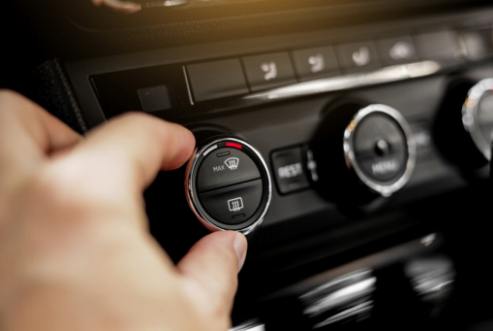How to Identify and Address Windscreen Glass Damage
22 November 2025 by Francis W.One of the most critical components of any vehicle is the windscreen. A damage-free windscreen ensures the safety of both the driver and passengers, as well as providing unobstructed visibility while on the road. However, windscreen glass damage is a common occurrence that can occur for a variety of reasons, from flying debris on the road to extreme weather conditions. In this article, we will discuss how to identify and address windscreen glass damage, including the types of damage, the severity of the damage, and when to repair or replace the windscreen. We will also cover the steps for effective windscreen repair, the replacement process for a damaged windscreen, and maintenance tips to prevent future windscreen damage.

Understanding Windscreen Glass Damage and Its Causes
Windscreen glass damage can occur due to a variety of reasons, ranging from small chips to larger cracks. Common causes of windscreen damage include flying debris from the road, temperature changes, and even manufacturing defects. It is important to understand the potential causes of damage in order to effectively identify and address any issues with your windscreen. By being aware of the common causes, you can take proactive measures to prevent damage and prolong the lifespan of your windscreen.Types of Windscreen Damage: Chips and Cracks
Windscreen glass damage can come in the form of chips and cracks, which can occur for a variety of reasons. Chips are small, typically circular damage to the glass, often caused by small rocks or debris hitting the windscreen. Cracks, on the other hand, are larger linear damage that can be caused by a more significant impact or changes in temperature. Understanding the differences between chips and cracks is important when it comes to assessing and addressing windscreen damage.Assessing the Severity of Glass Damage on Your Windscreen
Assessing the severity of glass damage on your windscreen is crucial in determining the appropriate course of action to take. It is important to carefully inspect the damage and consider the following factors: the size and location of the damage, the depth of the impact, and the presence of any accompanying cracks. By thoroughly assessing the severity of the damage, you can make an informed decision on whether the windscreen can be effectively repaired or if it needs to be replaced.When to Repair or Replace Your Windscreen
Identifying when to repair or replace your windscreen is crucial in ensuring the safety and integrity of your vehicle. If the damage is minor and limited to small chips or cracks, it can often be repaired. However, if the damage is extensive, such as large cracks or multiple chips, then it may be necessary to replace the entire windscreen. Additionally, the location of the damage is also a key factor in determining whether a repair or replacement is needed. If the damage is directly in the driver's line of sight, it is typically necessary to replace the windscreen for the safety of the driver and passengers. Ultimately, it is important to consult with a professional to accurately assess the severity of the damage and determine the best course of action for your windscreen.Steps for Effective Windscreen Repair
When it comes to repairing windscreen damage, it's important to follow a systematic approach to ensure the best results. Here are the steps for effective windscreen repair:1. Clean the Area: Before starting the repair process, it's essential to thoroughly clean the damaged area. Use a mild detergent and water to remove any dirt, debris, or residue from the surface of the glass.
2. Dry the Area: Once the glass is clean, allow it to completely dry before proceeding with the repair. A dry surface is crucial for the repair materials to adhere properly and effectively.
3. Apply the Repair Resin: Using a repair kit specifically designed for windscreen damage, carefully apply the repair resin to the damaged area. Follow the instructions provided with the kit to ensure proper application.
4. Use a Repair Bridge or Injector: In some cases, a repair bridge or injector may be used to apply the repair resin and create pressure to ensure it fills the damaged area completely.
5. Allow the Resin to Cure: After the repair resin has been applied, allow it to cure according to the recommended time frame provided by the manufacturer. Curing time may vary depending on the type of resin used and the severity of the damage.
6. Scrape off Excess Resin: Once the resin is fully cured, use a razor blade or similar tool to carefully scrape off any excess resin from the surface of the glass. This will leave the repaired area smooth and level with the rest of the windscreen.
7. Polish the Area: To further blend the repaired area with the rest of the windscreen, use a glass polishing compound to gently buff and polish the surface. This will help restore clarity and visibility. Following these steps for effective windscreen repair can help address minor damage and prevent it from spreading further. It's important to note that not all types of damage can be effectively repaired, and in some cases, windscreen replacement may be necessary. If in doubt, it's best to consult with a professional technician to determine the best course of action for your specific windscreen damage.